Exploring Species Diversity in Florida Keys Seagrass Beds: Middle School Science in Action
- Caleb Mullenix
- 18 hours ago
- 5 min read
Discovering the incredible biodiversity within Florida Keys seagrass beds transforms middle school students into active marine scientists. These underwater meadows harbor one of Earth's most productive ecosystems, supporting extraordinary species diversity that rivals tropical rainforests. Understanding these complex communities requires hands-on investigation, systematic observation, and guided exploration that connects classroom learning to real-world conservation challenges.
Why Seagrass Beds Matter for Middle School Science Education
Seagrass ecosystems provide the perfect outdoor laboratory for middle school students to investigate biodiversity principles in action. These flowering marine plants: not algae: create structured habitats that support 43% to 64% more species than adjacent bare seafloor areas. Students can directly observe how habitat complexity influences species richness, abundance, and community structure.
The Florida Keys encompasses approximately 1.5 million acres of seagrass meadows, making it part of the world's largest contiguous seagrass ecosystem. This vast underwater prairie demonstrates fundamental ecological concepts including food webs, predator-prey relationships, and ecosystem services that students can witness firsthand during educational expeditions.
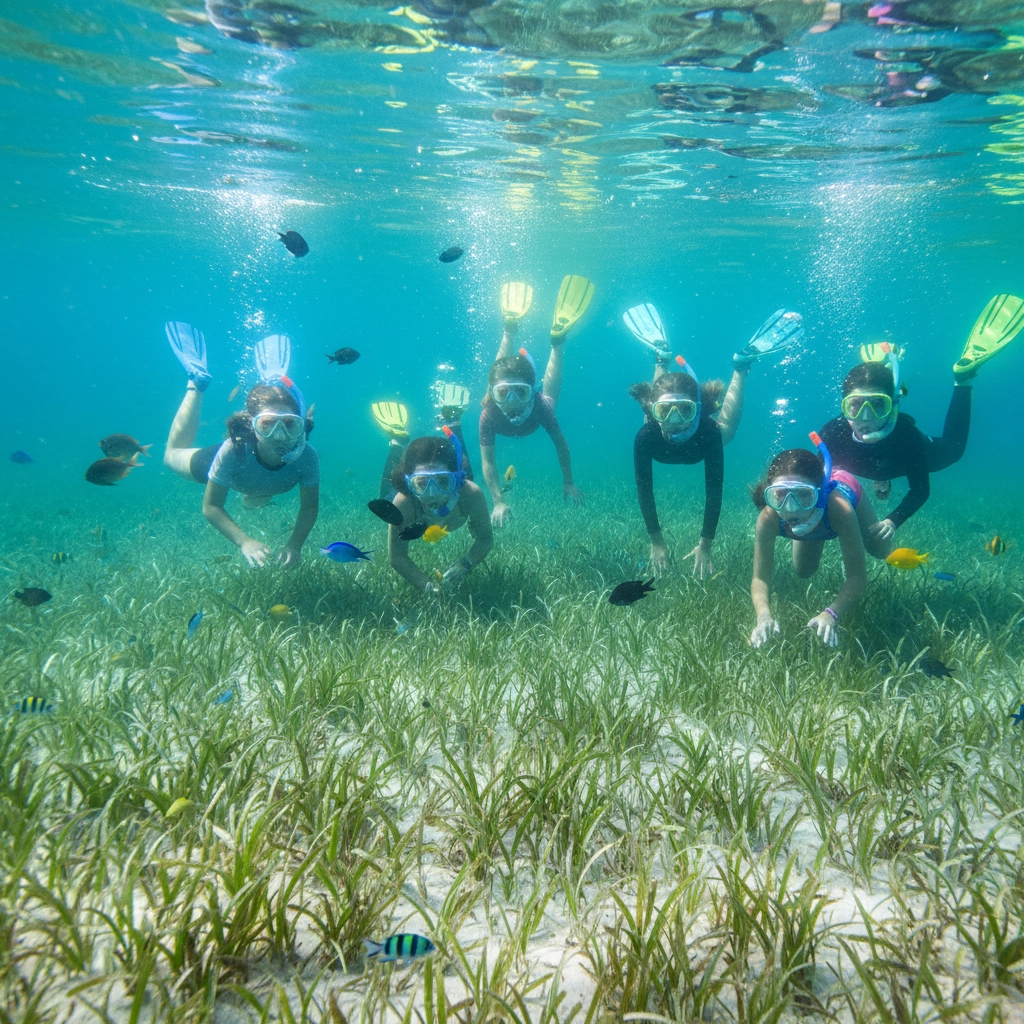
Appleseed Expeditions designs specialized middle school programs that transform students into field researchers within these remarkable habitats. Our guided investigations emphasize scientific methodology, data collection, and critical thinking skills while students explore species diversity patterns that scientists continue to study today.
Identifying the Foundation Species: Three Key Seagrasses
Begin your seagrass investigation by teaching students to identify the three dominant species that create these productive habitats. Each species exhibits distinct characteristics that students can learn to recognize through systematic observation and measurement activities.
Turtle Grass (Thalassia testudinum) features flat, ribbon-like blades growing up to 14 inches long with distinctive parallel veins. This species represents the most common seagrass in Florida Keys waters and provides the primary structural foundation for many marine communities.
Manatee Grass (Syringodium filiforme) displays cylindrical blades resembling thin straws that can reach up to 20 inches in length. Its unique structure allows it to thrive in deeper waters where light levels decrease, demonstrating adaptation principles students can investigate.
Shoal Grass (Halodule wrightii) serves as the third primary species, while smaller populations of star grass and paddle grass offer additional identification challenges for advanced student researchers.
Appleseed Expeditions provides specialized identification guides, underwater viewing equipment, and expert naturalists who help students develop systematic observation skills essential for scientific fieldwork. Our programs emphasize proper sampling techniques and data recording methods that mirror professional marine research protocols.
Investigating Fish Communities Through Systematic Sampling
Encourage students to focus their biodiversity investigations on fish assemblages within seagrass beds, where species abundance and diversity patterns become readily apparent through careful observation. Research demonstrates that fish communities in seagrass habitats exhibit significantly higher species richness and abundance compared to unvegetated areas.
Target species for student observation include white grunt, pinfish, fringed filefish, and various mojarra species, which constitute nearly 70% of small-bodied fishes in seagrass environments. Students can document how these species partition their habitat and fill specific ecological roles within the community structure.
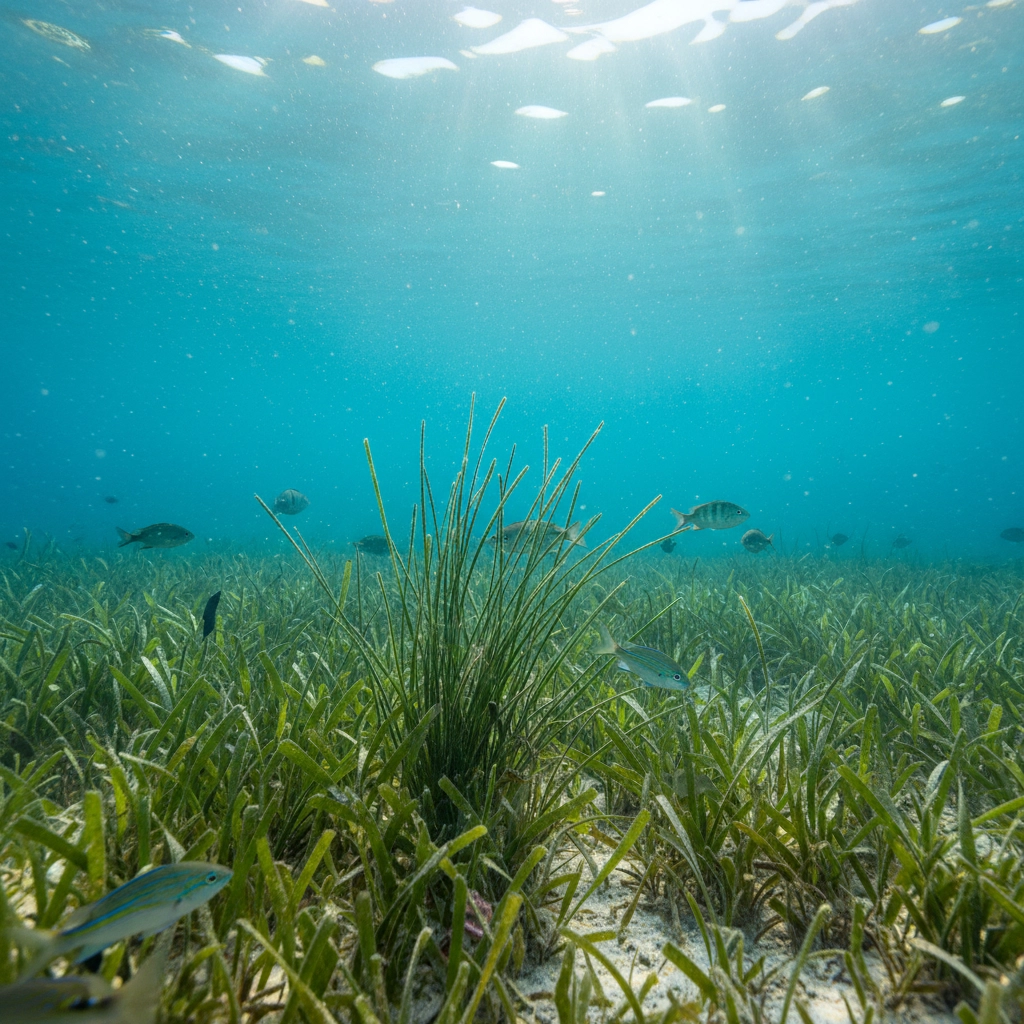
Design sampling protocols that allow students to compare fish diversity across different seagrass bed characteristics. Dense, structurally complex seagrass areas consistently support higher fish abundance and species richness, providing excellent opportunities for students to formulate hypotheses about habitat quality effects on organism populations.
Appleseed Expeditions equips student researchers with snorkeling gear, underwater identification cards, and standardized data collection sheets. Our marine biology educators guide students through proper fish survey techniques while emphasizing safety protocols and minimal ecosystem disturbance during research activities.
Exploring Invertebrate Diversity: The Hidden Majority
Direct student attention to the extraordinary invertebrate communities that inhabit seagrass meadows but often remain hidden from casual observation. These diverse assemblages include crustaceans, mollusks, echinoderms, and countless microscopic organisms that form the foundation of seagrass food webs.
Focus initial investigations on easily observable species including various shrimp, crabs, queen conch, sea stars, and sea urchins that students can identify and document during snorkeling expeditions. Emphasize how these invertebrates utilize different microhabitats within the seagrass community structure.
Introduce students to epiphytic organisms: bacteria, microalgae, and small invertebrates that grow directly on living seagrass leaves. These microscopic communities represent "ecosystems within ecosystems" that students can investigate using hand lenses and portable microscopes during field research.
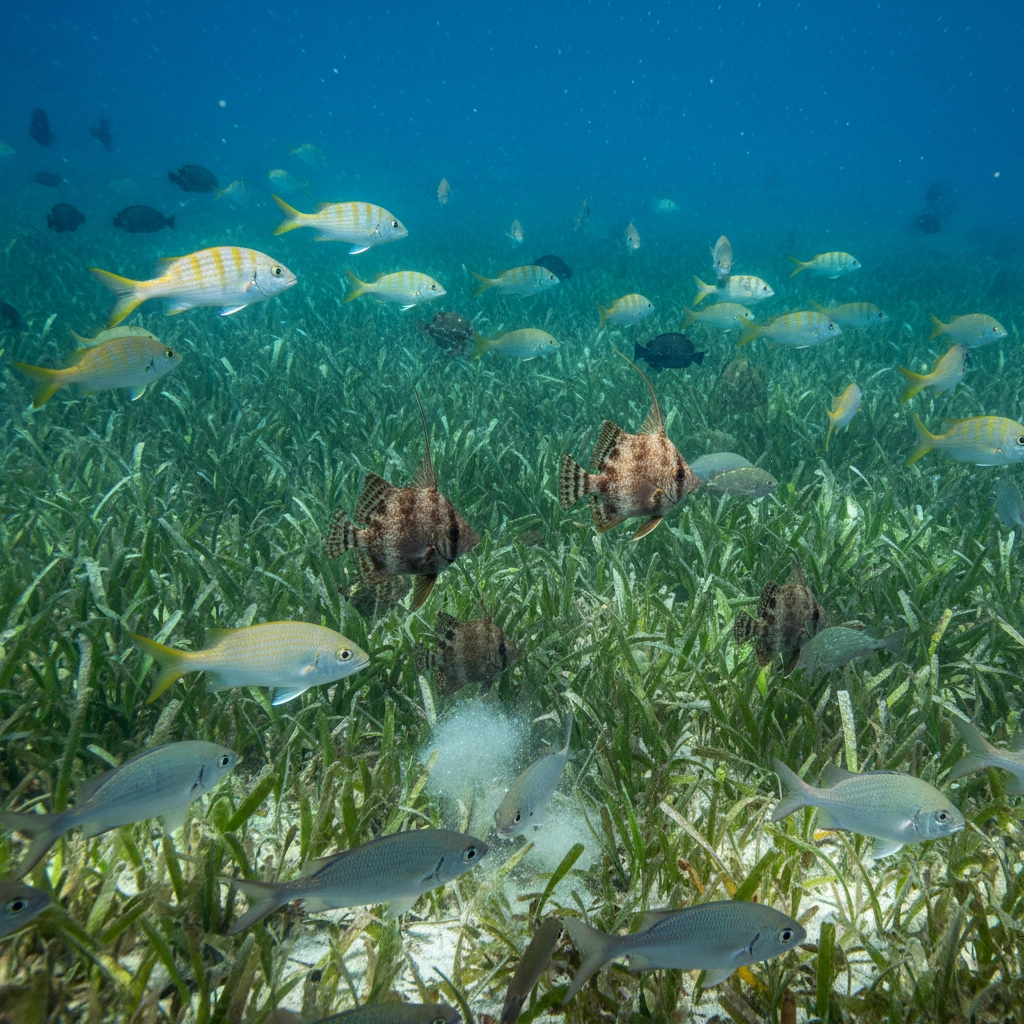
Provide students with sampling equipment including fine mesh nets, collection containers, and magnification tools necessary for detailed invertebrate investigations. Emphasize proper collection techniques and immediate release protocols that minimize research impact on these sensitive communities.
Appleseed Expeditions partners with marine research stations to provide students access to laboratory facilities where they can examine collected specimens under microscopes, identify species using field guides, and document their discoveries through scientific drawings and data tables.
Understanding Marine Megafauna Connections
Expand student investigations to include marine megafauna that depend on seagrass ecosystems for feeding, shelter, or nursery habitat. These larger species demonstrate food chain relationships at scales students can readily observe and understand.
Document manatee and green sea turtle grazing activities that directly connect these charismatic megafauna to seagrass primary productivity. Students can observe feeding behavior, estimate consumption rates, and investigate how large herbivores influence seagrass community structure.
Investigate bird species including various egrets, herons, and ibises that forage in shallow seagrass habitats. Students can document feeding strategies, prey selection, and habitat preferences that connect terrestrial and marine food webs.
Observe sharks, rays, and larger fish species that visit seagrass beds to feed on abundant prey congregated within these productive habitats. These predator-prey interactions illustrate top-down ecological effects that students can witness during snorkeling expeditions.
Appleseed Expeditions coordinates student research activities with wildlife viewing opportunities, providing telephoto binoculars, underwater cameras, and expert naturalist guides who help students document megafauna behavior while maintaining appropriate observation distances.
Conducting Comparative Biodiversity Studies
Design student research projects that compare biodiversity patterns across different seagrass habitats within the Florida Keys region. Gulf-side seagrass beds exhibit significantly greater species diversity, higher population densities, and more complex structural characteristics compared to Ocean-side locations.
Establish standardized sampling protocols that allow students to collect quantitative data on species abundance, diversity indices, and habitat characteristics. Students can formulate hypotheses about environmental factors influencing ecosystem development and test their predictions through systematic field investigations.
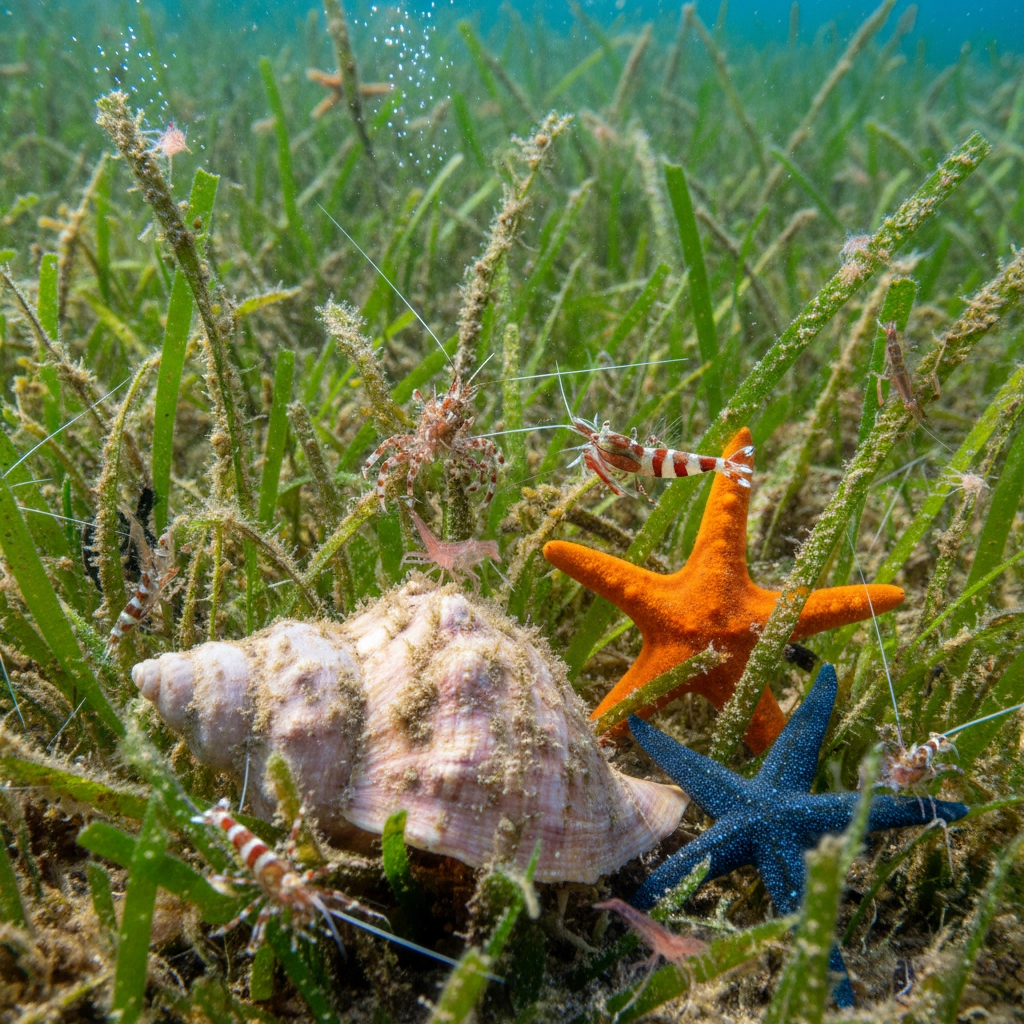
Create data recording systems that enable students to document water temperature, salinity, depth, current strength, and seagrass density measurements alongside their species observations. These environmental variables help explain biodiversity patterns students discover during their research.
Encourage students to calculate simple diversity indices including species richness and Shannon diversity to quantify their observations and compare results across different sampling locations. These mathematical analyses connect field observations to quantitative ecological principles.
Connecting Research to Conservation Action
Emphasize the conservation significance of student research by connecting their biodiversity discoveries to ongoing protection efforts within the Florida Keys National Marine Sanctuary. Approximately 70% of commercially important fish species utilize seagrass ecosystems at some point in their life cycles, demonstrating direct connections between biodiversity research and human food security.
Discuss how seagrass beds provide critical ecosystem services including sediment stabilization, water quality improvement, and carbon sequestration that benefit entire marine ecosystems. Students can investigate these services through water clarity measurements, sediment sampling, and current flow observations.
Address human impacts on seagrass ecosystems including boat propeller scarring, nutrient pollution, and climate change effects that threaten biodiversity patterns students have documented during their research expeditions.
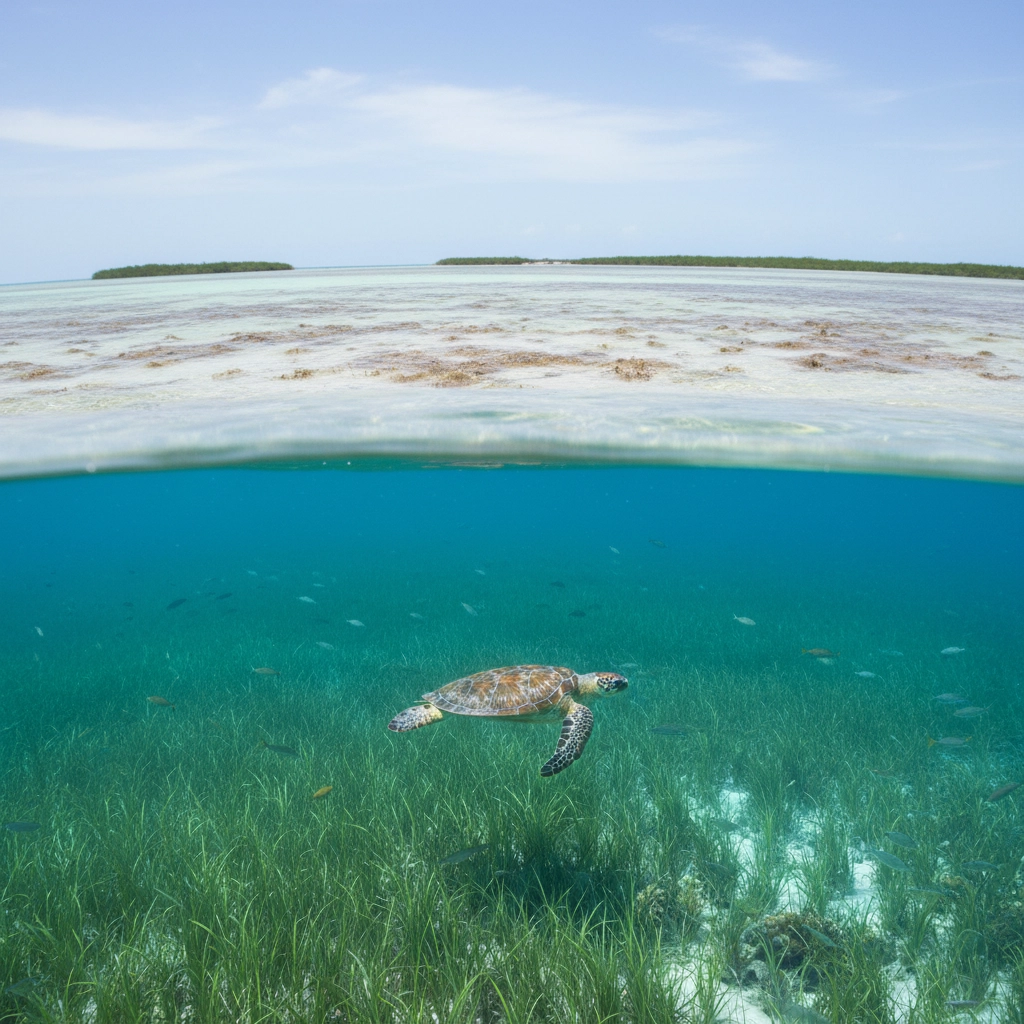
Engage students in restoration activities including seagrass replanting projects, water quality monitoring, and citizen science programs that contribute to long-term ecosystem conservation efforts within the Florida Keys region.
Maximizing Educational Impact Through Appleseed Expeditions
Appleseed Expeditions transforms Florida Keys seagrass biodiversity into comprehensive educational experiences that inspire future marine scientists and environmental stewards. Our specialized middle school programs combine rigorous scientific methodology with adventure-based learning that creates lasting connections between students and marine ecosystems.
Our expert marine educators provide the specialized equipment, safety protocols, and scientific guidance necessary for successful student research expeditions. Every program emphasizes proper field techniques, data collection standards, and ethical research practices that prepare students for advanced scientific study.
Begin planning your seagrass biodiversity expedition by contacting Appleseed Expeditions to discuss customized program options that align with your curriculum objectives and student learning goals. Our comprehensive approach ensures every student develops both scientific skills and environmental awareness through direct engagement with these extraordinary marine ecosystems.



Comments